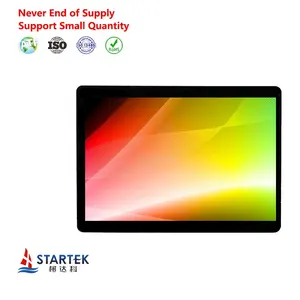
Full-view 10.1 Inch 1280x800 Resolution Tft Lcd Display With Touch Panel Screen 10.1'' LCD Module With HD-MI Interface

SC7283 40 Pin 24 Bit RGB 4.3 Inch Tft Lcd Display Flash Memory 480x272 IPS Lcd Display




















Thin Film Transistor Liquid Crystal Display (TFT LCD) technology stands as a pivotal advancement in the realm of digital displays. This category encompasses a vast array of components, primarily used to create visual readouts for a multitude of devices. TFT LCDs are distinguished by their use of a thin-film transistor (TFT) to improve image quality, such as enhancing color, contrast, and response time.
The versatility of TFT LCD modules is evident in their various types and configurations. These include standard TFT displays, as well as specialized touch screen interfaces and advanced options like OLED and e-paper modules for specific applications. Each type offers unique features, from simple readouts to complex, interactive displays.
TFT LCD screens are integral to a plethora of devices, serving as the interface for smartphones, tablets, monitors, and industrial control panels. Their application extends to automotive displays, medical equipment, and home appliances, highlighting the technology's adaptability and importance in modern electronics.
A TFT LCD panel is composed of several layers, including a backlight, glass panel, and liquid crystal solution, all orchestrated through thin-film transistors. These materials are carefully chosen for their optical properties and durability, ensuring clear display output and longevity of the module.
The advantages of TFT LCD displays are numerous. They offer superior resolution and image quality compared to previous-generation displays. The technology also allows for wider viewing angles and better performance in various lighting conditions, making them suitable for both indoor and outdoor use.
Selecting the appropriate TFT LCD module requires consideration of the display size, resolution, interface type, and other technical specifications. It is crucial to match the display characteristics with the intended application to ensure optimal performance and user experience.